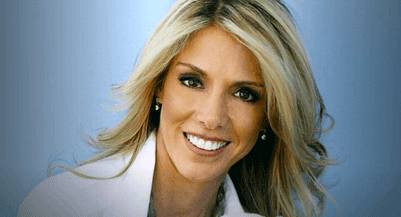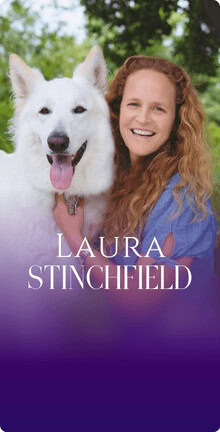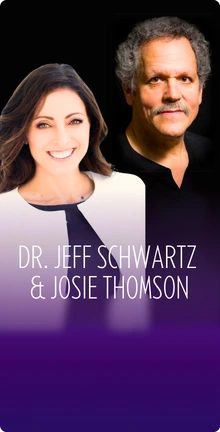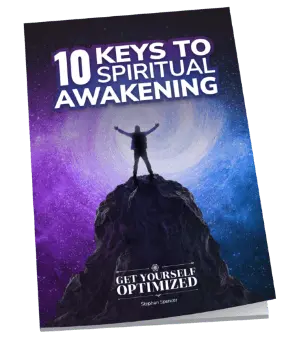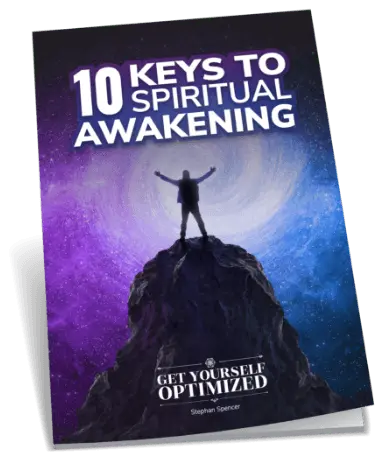In this Episode
- [01:41]Tamar starts by explaining how being a pet owner can be about being mindful, not just about tricks and techniques.
- [04:05]Do Tamar’s theories and techniques work with cats too, or are they specific to dogs?
- [05:50]Tamar offers a couple of alternatives to the term “owner,” but clarifies that she doesn’t mind the term herself.
- [06:44]What are some tips for someone whose dog seems to want to be in charge, or insists on misbehaving? As she answers, Tamar clarifies that dogs don’t care about being in charge.
- [08:03]Tamar talks about the needs that dogs have. It’s when these needs aren’t met that dogs can misbehave or act out, she explains.
- [12:39]The first thing you need to do with a misbehaving dog is figure out which of these needs aren’t being met. Tamar offers an example of a recent case in which she had to assess a dog’s needs. She then clarifies that each individual dog has two primary needs, and talks about why it’s important to figure these out.
- [18:44]Tamar offers an example that Tony Robbins uses, and applies this to dogs. She says that we can’t expect dogs to know how to meet their needs in the right way if we only say “no!” when they do it the wrong way.
- [22:08]Tamar lists several of the influences and resources that she uses in her method. She then describes why a dog might refuse to come at the dog park, and what to do about it.
- [25:20]We hear about the problems with simple obedience.
- [27:14]Stephan draws out the concept that Tamar has been explaining, relating it not only to dogs but also to people and even technology.
- [28:49]Tamar addresses a misconception about dogs, which is the expectation that dogs give unconditional love.
- [34:05]Stephan points out that a dog is a reflection of you, and if you have a short temper, it will reflect that back on you. Tamar then explains that 99% of the aggression she has seen in dogs isn’t dominance, but rather nervous aggression.
- [38:48]In Tamar’s first book, she started by telling a story about her experience in Thailand several decades ago. She retells this story, and applies it to dog training.
- [42:18]Tamar describes the Hoffman Process and reveals how powerful it is.
- [49:14]Stephan talks about his multiple experiences with Tony Robbins’ Date With Destiny program.
- [51:24]“Your quality of life will depend on how comfortable you can be with discomfort,” Tamar says, applying the concept both to dogs and people.
- [53:52]What would be an example of getting out of the rut of characterization with regards to your dog? As she answers, she offers advice on how to train your dog in a way that he or she will understand.
- [58:00]Stephan brings up the example of teaching a dog not to run out the door as soon as you open it.
- [60:29]Tony Robbins has a saying: “Trade your expectation for appreciation, and everything will change.” What would be an example for how listeners could do this in regards to their dogs?
- [64:36]How can people get in touch with Tamar to work with her?
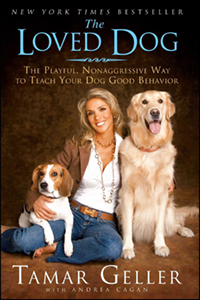
Thank you for joining us, Tamar. It’s so great to have you on the show.
Thank you for having me, Stephan. It’s wonderful to be with you guys.
If you could start by explaining how animal training or being a pet owner can be mindful instead of just about tricks and techniques.
It all goes back to Science. Science has proved that developmentally and emotionally, dogs are exactly like a human toddler. You can no longer dismiss them as animals and give them commands because if you’re not giving commands to a child, to your toddler, why would you do it with a dog? The reason why we get a dog is because we want to receive love and we want to give love, which we’re going to talk about in a second about giving versus receiving love. The thing of it is I do not believe in teaching commands in any relationship. Not with my children, not with my significant other, not with my employees and certainly not with my dogs. What I want to teach is I want to empower them to be all that they could be. Each one of us, two-legged or four-legged, is a unique individual. Each one of us has something special, unique. If you look at nature, just all the hindsight nature, nobody has the same exact fingerprint, nobody has the exact same ear, nobody has the exact same iris, and we can come from the same family and yet we are completely an individual. I love to think that each and every dog is an individual. Not like oh, you’re a Labrador, that means you are X, Y, and Z. It’s like saying, “Oh, you’re Jewish. You are X, Y, and Z.” No, it’s not true! We are all individuals. My role as a mindful dog trainer or the way Oprah calls me, Life Coach for Dogs and Their People, is to help people uncover the uniqueness, the specialness, the magnificence in their dog and what happened in the process when they are learning those skills, they actually take it to other areas of their lives. All of a sudden they are becoming a better parent, they are becoming a better lover, a better spouse, a better friend, a better boss, a better employee, better with ourselves, they become better with themselves. What it is is a practice and when it becomes based in Science and anchored in spirituality, it’s awesome and you get so much more out of your dog than just by giving commands and a dog merely obeying.
Yeah, so true. Is this also applicable at all if you have a cat?
I do not work with cats and the reason why is I have more than enough to help in the dog world and cats are not as social animals in their core. I’m only working with dogs because they are so similar to people and I believe they are angels of God in our lives to teach us how to be better with each other. They are absolutely reflecting back to us, how we show up in a relationship, their owners. Let’s say if you’re in a dog park and you call your dog, and your dog looks at you, think about it and runaway, you can say, “I have a bad dog,” or you can say, “Hmm, I wonder why when my dog sees my name on his supposedly peripheral, cellphone, why he looks, oh I see who’s calling and push the ignore button.” Do you know what I mean? You have to see why does my dog associate coming back to me with pain. Or you can go into the lack of mindfulness and blame. Blaming is always the easiest and blaming a dog is by far the easiest thing. What I want to do is get people to say no, your dog is not a cat, your dog wants to connect with you. Cats, not so much. Cats are loving, but they are not as loving as dogs, generally speaking.
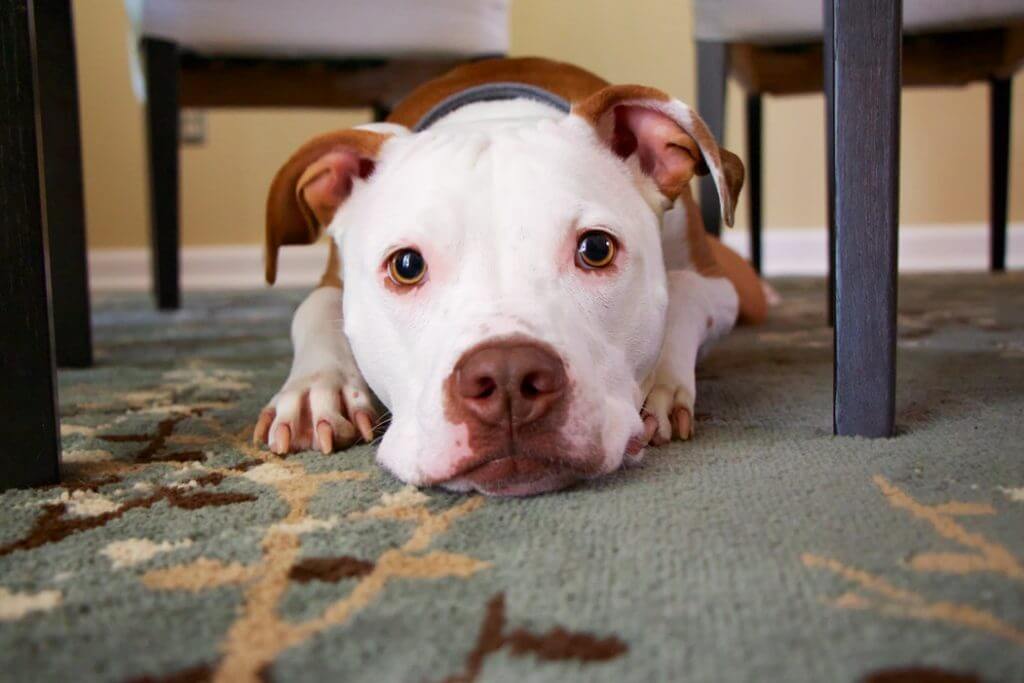
Got it. We’ll focus on dogs in this episode and how you could become a more mindful pet owner or dog owner is the goal here, like you say, life coaching our listeners to be better dog owners so that they’ll come away with some actionable techniques at the end of this episode.
We can say dog owners, we can say dog parents, we can say pawrent, there’s a lot of pushback now with the term ‘owner.’ I don’t have a problem with that. I just want to acknowledge that I respect it and to simplify, I think it’d be easier to keep using the term ‘dog owner.’
Yup, okay. Got it. What would be some of the techniques that would help our listeners with their dogs? Let’s say it’s a misbehaving dog that doesn’t follow the directions of their owner. Jumps on people when they’re told to get down and still does it, just runs out the door before you get a chance to open the door fully, they just do their own thing, they’re in charge, essentially.
Number one, this is one of the biggest misconception, that they are in charge. There is zero, but zero need to be in charge. This is one of the myths that’s important to dispel. A dog has no interest to being in charge, zero. My background studied wolves in the wild. I know for a fact how much hierarchy and how much the desire to be the leader of the pack is there and this is truly one big nonsense. A dog does not essentially “want to be in charge,” a dog just like us wants to get their needs met. When I’m talking about needs, I’m referring to my dear friend Tony Robbins, six human needs. The six human needs that he is talking about, five of them are absolutely 100% applicable to dogs. I’ll talk about the needs in a second. What happens is a dog is not getting his needs done and he’s trying to find a way to meet the need and immediately is being labeled as oh you’re trying to be in charge. You’re not trying to be in charge, show me a way that I can do it that meets your needs and I’ll be happy to do it because dogs want to connect. But they cannot live their life without getting their needs met. What are the needs? One of the needs that Tony talks about is the need for certainty, the need for predictability, the need for security, the need for safety. I’m talking about people, we need to know that we have food at the table, we need to know that we are not going to have a flood that’s going to sweep our home away as we speak in Houston, Texas. We need to know that we are safe, we don’t want to be at work getting a call that one of our children was in an accident, they’re on their way to the hospital. Because then, everything that we’re about to do is put on hold, our life is put on hold.
Dogs must have certainty and predictability.
Why? Because we must have certainty. Dogs, by the way, also must have certainty. They need to also have predictability and that they are safe and that they are understood. But just like with people, too much certainty can become boring. You have food, but it’s the same food. You have a relationship but it’s the same joke, it’s the same story again and again and again. What we need is we need also the opposite of certainty, which is uncertainty. We need adventure, we need unpredictably, we need some excitement. We need certainty and we need uncertainty. The best example for that is when people go and watch a sports game. Most people who love sport is because they have enough certainty that they know what the rules are, they know what it’s going to be about, they know who is the strong player but they don’t know how it’s going to play out, they don’t know who’s going to be the winner.Certainty and uncertainty. For a dog, they love going to the dog park, but they don’t know who is going to be there. Which food, I like to use food rewards and treats, don’t use the same one, have a variety, surprise them. You see what I’m saying? Certainty and uncertainty. You like to take the dog for a walk, you like to take the dog for a hike, great. Not the same two and a half blocks again and again and again. Make it exciting. Certainty and uncertainty. One of the needs is to have love and connection, love and belonging where when you walk to a restaurant and nobody is turning and looking at you because something happened to you and you are deformed. You want to fit in, you want to belong, you want to feel not an outsider. But within that, you also want to be significant, which is another need where you want to feel that you are being noticed, that you are standing out, that you have something to contribute that is interesting, that you are being appreciated.
Certainty and uncertainty and love and connection versus significance, four needs, dogs have the same thing. They want to belong, they want to fit in, they want to live in peace, but at the same time, they want to feel that we see them, that we notice them, that they are special to us, that we connect with them. The other two needs for people is the need for growth, the same is for dogs. Dogs need to grow, dogs need to be mentally stimulated. One of the biggest issues that I have is, “My dog is chewing.” What is your dog having to do? Nothing, he’s bored. “My dog is running out the door,” like you said. What’s happening at home? It’s boring. He’s going outside because he needs to learn new things, he needs to be connected, he needs to get some uncertainty. Too much certainty in the dog’s life. You understand what I’m saying? The dog needs to have the need for growth. The last need for people is the need for contribution. I do not believe that dogs have that need, why? Because of their soul. Everything that they are about is about contribution. I changed it to the need of having physical exercise. Many, many dogs, we can solve the issue by simply giving them proper physical exercise. These are the six needs. When I’m going to a home and a dog “misbehave”, I’m looking at the owners, I’m looking at the parents, I’m looking to see are you meeting your dog’s needs? Because if you are not meeting your dog’s needs, don’t blame him for trying to find a way to meet the needs. This is normal, this is predictable, you know what’s going to happen.
The first thing you want to do is to find which needs are not being met. I just worked recently with a wonderful, wonderful, little Westie, Alfie. He was just an amazing dog but he was always by the front door, always barking, always growling, he would not look you in the eyes, he was just doing his own thing. I was their second or third trainer because nobody could help him because everybody kept coming from the old way of the dog is doing x, how do I stop it? I’m coming from a different place, I’m coming from mindfulness. I’m saying, if life is happening for me, what is it trying to communicate with me? He is trying to communicate, he’s not doing it to me, he’s trying to communicate with me. Alfie, my darling, what needs are not being met? I realized that he was having too much certainty in his life, he was not having enough uncertainty so he finds ways to even when a leaf would fall out, he would bark at it. Why? Because it was something. His owner loved him, loved him. They are working from home, he was with them all the time. But that was not what he needed.
Often time in relationships with people. People give to the other person what they like to receive as opposed to stopping, being mindful, and asking what is it that matters to you? What can I do? What are your needs and how can I meet your needs at the highest level? What we did, we taught Alfie that we want him to look us in the eyes, because he didn’t even know that it was an option. It’s like if I’m in a relationship with somebody, maybe two-legged or four-legged, I need him to look me in the eyes, I need him to want to connect with me. We taught him every time he looked us in the eyes, he got a treat and we called it ‘watch me.’ He was like, oh my gosh, I’m going to watch you all the time. And then we started working with him and we gave a lot of growth, we taught him a lot and you can see it actually on my Instagram account where his 12-year-old sister is teaching him to lay down and chillax while she is jumping and dancing and running around the furniture and having fun. Where he had to overcome his impulses to join her and instead to be mindful and to remain, because that’s what she wanted him to do. What I’m doing is I’m looking first, as opposed to blaming the dog and saying he’s being dishonest ultimately, he wants to be in charge, we need to get rid of that mind thought. It’s completely, completely wrong. A dog does not want to be in charge, period. In the 30 years that I’m doing it, I can count on one hand how many dominant dogs I’ve met. This is ridiculous. What he wants is to meet his needs, wants to meet his needs at the highest level, if we’re not going to do it, they’re going to find a way. When I’m doing it, it’s not about techniques.
The technique is how the owner asks good quality questions.
The technique is how the owner asks good quality questions. The good quality questions are to stick with the needs and to ask which one of those two needs of the six needs are my dog’s top two needs. As you know Stephan, for being also studying with Tony, we all have the same six needs but two out of them are the leader. They lead our decision making. If you want to be significant, completely going to make different sets of decisions, then you want to be in a relationship that is based on love and connection. It’s the same for dogs. You have to see what are the two needs that the dog is not getting enough of. Once you find a way, and again, I have a lot of information and I have online dog training and I have books, I have another third book coming out, then I have the private sessions and everything, we find what are the first two needs for the dog and how can we answer it in the highest level where the dog feels how did I get so lucky to have such awesome parents, pawrents, owners. How did I get so lucky? They really get me. Think about it Stephan, in any relationship, what we want is to be with the person who gets us, who gets us! Dogs are not different. It’s like if you are in a relationship with a woman and every time she tells you something you just tell her, “You don’t really need it, you just want to be in charge.” What chance does the relationship has to survive? Very little. That’s the same with dogs. That is what mindful dog training is. It’s not techniques, it’s not obedience, it’s not barking commands, I don’t allow any of that. What it is is truly stopping and learning, why? Because dogs are angels from God, and they are our training wheels to learn how to be in relationships. If we’re going to learn how to understand the other, the dog is playing that role for us, never blaming the dog, never think he wants to be in charge, never say is “misbehaving” because they’re not misbehaving. According to who? According to our culture? Dogs in their culture, that will not be considered misbehaving. You are married to an Israeli, I am Israeli, you know we come from different cultures. There are some things in America that are considered acceptable, to us they’re completely unacceptable. Being overly polite and not tell you the truth, that is not acceptable in my culture and in your wife’s culture. You see what I’m saying, we feel safer when somebody tells us the truth.
Yup, that’s true. If we take this filter and set it aside, let’s just try and understand what the dog is experiencing, what is he or she trying to get met as far as his needs and how can I take care of his needs in a more effective way? This isn’t about tricks or techniques.
That’s exactly right. The example that you know that I love, that Tony always talks about, is that, in order to meet the needs, and that’s also in the Hoffman Process that I love so much. You have options, you have the right road, the light road or you have the left which is the dark. Meaning, you want love and connections, you can join a church, you can be in a beautiful relationship, you can volunteer, or you can join a gang. You get love and connection right there. You have many ways. A dog to meet his needs, all he has on his menu is what God gave him as his impulses. It’s almost like if you picture that there’s a menu, the two sides to the menu, and right now the dogs have only the one side to the menu which are impulses. Just like in a relationship, you cannot expect your partner to know if you don’t tell them. We cannot expect the dogs to know how to meet their needs in the right way, in the light way, in their mindful way, if we are not teaching them that. Just saying no does not teach what is yes. We literally have to show the dog what it is that we can give him in a way of meeting their needs so they would not have to take matters into their own hands and do it in an impulsive way. Which is exactly like raising kids. It broke my heart, it was yesterday out somewhere and there was a very young kid, a year and a half, with his parents, and his mommy was sitting in the stroller and his mom was talking to the one and a half-year-old kid who was just sitting looking at me. She said, “Stop being crazy! Stop looking at people! Stop looking at people! You look crazy!” I looked at the one and a half-year-old boy and I said, “Darling, you are not crazy. You are not crazy, you are good. You are good.” I just saw how the woman bringing her own programming and ruining that kid’s life.
Alison Armstrong which I love, I started my second book talking about her. She talks about how so many women take a prince for a man and unbeknownst to the woman, she frogs him, she turns him into a frog. Every woman wants to kiss a frog to turn into a prince. She said, “How many women get a prince and defrog them?” I started that, my second book started with the word “frog farmer” and I wrote how many people get an unbelievable dog and de-frog the dog. De-frog the dog by not teaching the dog how to get their needs met according to our human social standards. The dog doesn’t know, it’s not like he comes to us and says, “I can see it and I can get a treat, or I could jump and get a treat. Let me see which one.” The dog has only jumping when it comes to us. How do we have the right to correct someone without first teaching them? I don’t believe we do.
De-frog the dog by not teaching the dog how to get their needs met according to our human social standards.
I love Alison Armstrong. She’s so fantastic, I attended her workshop on understanding women and I’ve had her on my show. Episode number 61, listeners definitely check out that episode.
Check out Alison. It’s really interesting because what I use in my method is all my wolf study that I’ve done in the nature, in the desert in Israel, but I also used Alison Armstrong, and I used Harville Hendrix, and I used Tony Robbins, and I used the Hoffman Process, and I used all these things which are ultimately about if you want to change the relationship, then who needs to change? In any relationship, if you want to change a relationship, who needs to change first? You got to change. That’s why it’s the same with dogs. You know what, it’s easier to do it with dogs before you do it with people because the dog would not reject you as fast a person would reject you and also the dog would not judge you for not being perfect. But when the dog walks away when you call him in the park, instead of blaming the dog and saying, “Oh you want to be in charge,” is to say, “Oh, he’s not coming to me. Hmm, I wonder.” Because if it was a woman you are calling and she was pushing ignore when she saw your name, you will not say, “Oh, she’s trying to be in charge.” You would say, “God, I wonder why she doesn’t take my calls, what is she associating me?” Clearly not with pleasure. What can I do to get my dog to associate me with pleasure? I’ll give you the answer by the dog park. Because what happens when their owner calls the dog to come to them in the dog park, what happens next? Do you know what happens next, Stephan?
The fun ends.
You got it! They put the leash on and they walk to the car and that’s it. The dog, when the owner calls, just like when we do when our cell phone rings, we stop, we look at that, and we’re going to assess pain or pleasure. Okay? Dog stops, looks, and says pain or pleasure, and it goes pain. How do you overcome that? By teaching your dog that every time you call him in the park, you come with gold-level treats, refreshments, and you give to the dog when you call the dog and then you say, “Come, Cricket!” Whatever the dog’s name, my dog’s name is Cricket. And then you say, “No more, go play!” You teach the dog that you are like a pit stop in NASCAR. You come, you get, boost up, you get treated, you change your wheels, you change your oil and go the golden race. Go and have fun. It’s the same as a mother with a kid, if the mom takes a kid to the playground, to the beach and every time she calls the kid, it comes to her and it’s like, “Sleep in the shade now, don’t go out and play.” You better believe the kid is going to become deaf temporarily. How many parents we see that that’s what happen with their kids? The kids are deaf temporarily. What happens is they frog the kid, they frog the spouse, they frog the dog. That’s where mindful dog training come in.
I love that. Not only are you thinking about what’s it like for your dog in that moment when you’re not getting the behavior that you would like out of the dog, but you’re also looking out for that dog’s welfare for its six dog needs.
Exactly. What’s the point of having a relationship with a dog or with a person? What’s the point? You want them to be beyond ecstatic or the way Tony says, your raving fan. You don’t want it to be obedient. Obedience is the lowest consciousness level, lowest. I have to, I don’t want to, but I have to. Otherwise, they’re going to hurt me physically, with a choke chain, with a prong collar, with a shock. I have to be obedient, is that a relationship? If dogs are so amazing, that’s the level that you want in your life? You better take a look at your life because if you want to be in control that somebody has to be obedient to you, because otherwise, you’re going to hurt them, that’s the Saddam Hussein level of relationship. That’s a Saddam Hussein School of Governing. Is that what you want to be? A Saddam Hussein to your dog? That you have to be the leader all the time because otherwise they have to be submissive to you? If that’s the case, we do not operate on the same level. Because I look at relationships with a human, with a dog, with anything, I want them to look at me and to be grateful to God that I’m in their life. That like, “God, you get me.” Whether it’s human, whether it’s a dog, whether it’s my employee, whether it’s my lover, I want them to look at me and to say, “How did I get so lucky? She really gets me and she meets my need way higher than I ever expected.” That’s what you want from your dog, because I’ll tell you what, if you are now in the practice of doing it with your dog, that becomes muscle memory, a muscle memory in your soul, in your heart, not just in your brain. You now go and look at life completely different.
Obedience is the lowest consciousness level.
That’s so, so important. This concept, if listeners you get nothing else out of this episode, this is it. That when somebody, whether it’s a human, or it’s a dog, or even a computer, you are talking to that person, or that computer, or that animal with either a higher level of consciousness or a lower level of consciousness. When you are a lower level of consciousness, let’s say that you’re yelling at your Alexa, your Amazon Echo, you’re yelling at Siri, or being rude or dismissive, that shapes your brain. It’s super important that you embody this, make this part of your identity that you are a higher consciousness individual and that you show up that way with your dog. I just wanted to bring that point. In fact, there is actually studies that have been done on people’s brains. There are actually studies done where they had looked at the brains of people who were rude to the AIs, to the Intelligent Agents, the Alexas and the Siris and all that. It was not healthy for their brain. Do it not just for your pet, do it for your own mental health.
Absolutely, absolutely. But again, there is a huge misconception when it comes to dogs and I think we need to address that. There’s something really yucky when it comes into a relationship with expectancy to receive, you deserve. Meaning you don’t have to do much, you deserve. It’s no place more evident than in relationship of people with their dogs because of the terrible myth, terrible lie, they’ve been perpetuated for decades. The dogs give unconditional love. You heard it, right? A dog should give unconditional love.
Yeah, I’ve heard that myth before but I’ve pretty much always recognized it as a myth. They’re very forgiving but you reap what you sow.
That’s exactly right. The thing of it is when people put nothing into the relationship, not much effort, not much teaching how to move from impulse-based behavior, that’s what they came into the world with, then teach them how to be mindful and not to recognize how to live in the human society and to teach them with kindness and games and make it fun to learn so they want to keep learning from you. Not only the people don’t do that, then they therefore label the dog. The dog is trying to be the leader, the dog is dominant, the dog is stupid, the dog is stubborn. You know what happens to the dog? He ends up with the one-way ticket to the animal shelter where he gets 72 hours to make a case for his life. It’s not a dog’s problem, it’s a people’s problem. We need to change it because I love our JFK, he said, “Ask not what the country can do for you, ask what you can do for your country.” Because to me, it’s any relationship, ask not what the dog can do for you, ask what you can do for your dog. If you come from that place of how can I serve you, how can I understand you, what am I not getting? You’re going to change your whole life because you became very, very good understanding a dog. If you can understand a dog, again, scientifically was proven that they’re exactly like us, emotionally and cognitively, and developmentally when we were human toddlers. Look at human toddlers, they’re so innocent, they are still like clay that we can mold and shape. That is your dog. How can you mold and shape your dog, what are you doing to have your dog experience that life with people, life with the world is a wonderful experience and that the world is a safe happy place? I always think about the difference between Saddam Hussein and Gandhi and Saddam Hussein obviously wanted to be the leader of the pack, wanted everybody to be submissive to him, we know in dog trainings, some very famous Hispanic dog trainer still follows that routine, versus Gandhi who was a leader who served his people. He took the people who didn’t know how to read or write. He empowered them to get rid of the most powerful empire of the time, the British Empire, and doing so without using violence. What kind of leader do you want to be? Leader in your relationship, leader in your work, leader in your own life, of course with your dog. You have the choice, why? Because we have evidence, we have proof. Both ways are possible, which way would you like now? The Saddam Hussein method is the primitive, primal, reptilian brain approach that if you argue with me, I need to crush you. If you are not doing what I’m saying, that means you are trying to take over. It’s completely living in a place of scarcity.
And reactivity.
Of course, reptilian brain. If we go with the Gandhi way, it doesn’t make sense to our mind. It doesn’t make sense, how would I get it done? Because of grace, because he was smart, he knew what he was doing, he knew how to use resources, resources that the British Empire needed. To use that with grace and through that he made it happen. If he can do it with that, can’t we do it with a dog who wants to love us, who wants to connect with us? It’s time, Stephan, it’s time. You can see I’m very, very passionate about it because it’s time. Particularly now when we are in the world, when there’s so much rise of reactivity, reptilian brain, darkness, hatred, this is now more important than ever to start practicing understanding and judgment and loving and bring grace into everything that we do even when we deal with the other who is the opposite of that. Dogs are not the opposite of that. Dog is not, let’s say, in your Nazi group who is going and protesting in Charlottesville. Do you see what I’m saying?
Yeah. The dog is like a reflection of you and your consciousness. If you’re going to be barking out orders and being short and having a temper, then the dog is going to reflect that back on you in either how it cowers or how it snaps at you, but the source of that reactivity is you.
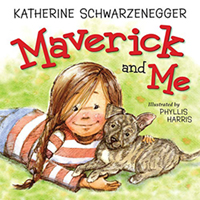
You’re right and you just brought a very important point. I’ve been doing it for 30 years. 99% of the aggression that I see in dogs is not dominance, it’s nervous aggression, fear aggression, 99% of aggression. I cannot tell you how many German Shepherds and Pitbulls and Chihuahuas, whatever size that I deal with aggression. I’ll give you the best example, I get a call from Maria Shriver, she calls me and she says, “We have a year and a half old dog Maverick who is starting to attack people who come to the house. We had a trainer for a year and a half. The study’s dominant and everything and he’s just getting worse.” Maria says, “I called my best friend Oprah because she knows dogs and I asked her what should I do?” She said Oprah yelled at her and she said, “I have one word for you, Tamar!” I said, “Okay. But you understand that working with me, I’m not like a regular dog trainer. For me it’s a spiritual journey. Meaning, you guys are going to have to change, you’re going to have to be mindful of your own behavior.” She said. “Yes we are. My daughter’s dog, Maverick…” which by the way Schwarzenegger just literally wrote a children’s book about her and her dog Maverick because they are so, so connected. You better believe that he broke her heart, that the dog became unsafe now, he was aggressive. I came to the home, and the moment I opened the door, the dog wants to attack me. But what’s beautiful about energy, energy cannot stay the same. When he was lounging at me, at one point he had to move back, back to where he felt was his safety place. When he moved back, I threw a treat to him in the air and I said arf arf. I absolutely did not engage with fighting him, I did not engage with him with telling him no, I did not correct him. I waited ‘till he naturally, energetically, like a rubber band went back to this point of origin and I rewarded it. Do you know what I did? I confused him. Any of us who studied with Tony know that being confused is the beginning of change.
Yup, it’s breakthrough.
Right? Breakthrough. I started to make a breakthrough with the dog where every time he backed off, I threw treats. Believe me, I bought treats that were irresistible, absolutely irresistible. Then he got more and more into letting me back off. Let’s just say that at the end of an hour or two hours, the dog was French kissing me, because he realized that I got him. I’m not going to hurt you, I got you and what happened? Lo and behold, all the aggression was gone! Then we take it and work with him on the environments, on the hiking trail which I’ve never been or I do play training groups where we bring bunch of dogs and we work with them how to be with other dogs and we introduce them, we integrate them slowly according to the right personalities. It’s an unbelievable experience for the dog when he lived his whole life in a state of fear and distrust. All I’m trying to say, oh my god, I had no idea. I had no idea that dogs can be so much fun, I had no idea that men are such a source of pleasure and love. He was afraid of men. I can give you example after example of 99% of all aggression is fear aggression, which by the way is the same with people.
Yeah. Let’s say that we go with the Saddam Hussein style and we notice that because it’s out there in the world all the time. The dog poops on the carpet and what does the owner do, shoves the dog’s nose in it, screams at it. It’s just shocking and horrible.
In my first book, I started by telling my story in Thailand. While I arrived at night to Bangkok, I do not know my way around, that’s my first time being there, and I’m in a very cheap guest house. That was 30 years ago when I was a backpacker and you live on $5 a day, including food and hotel. Going to the bathroom, I’m done and I want to flush and there’s no means to flush. I’m like, what would I do? I can’t leave without flushing. That’s not okay and I actually don’t know what to do. I looked outside and I found an old Thai woman sitting there. Obviously, she doesn’t speak English, I do not speak Thai. I’m like, what do I do? How do I flush? Clearly she’s been there before, so she was describing with pantomime how there was a concrete type of tiny bathtub, maybe 2ftx2ft and it’s filled with water and there’s a bucket in there. To fill up the bucket with the water and just throw it into the toilet and that’s how it flushes. That’s what I did, but I said, “Thank God she didn’t take my nose and stick it in it.” Because number one, I will never want to be next to her again, number two, I want to learn what to do. What happens when people stick their dog’s nose in the poop on the carpet, the dog says, “I know it’s my poop. What’s the problem? I don’t understand what’s the problem.” They break their trust, they break their association of the owner with a source of pleasure. What happens, often time they call, “Oh, the dog will never go to the bathroom in front of me. He is shy.” He is not shy! He is scared, or the dog will eat the poop or the dog goes only behind furniture or in closets. Yes, dumbass you did it, you made your dog do it, you frogged your dog. I need people to stop looking at the dog as the dog is trying to get them. For a dog to go to the bathroom whenever they feel like is normal in their society. When you were a toddler, you also went wherever you went. I had a toddler, I had a two-year-old kid come here to my living room, go on the couch, and pee on my couch. The mom was horrified. I’m like, “Believe me, I’m used to it. Toddlers and dogs are the same thing. You understand what I’m saying.” It’s our responsibility as the pawrents, it’s our responsibility when we are parents to a child, to teach them how to be a part of this particular society. To assume that they know is wrong, and to correct someone when they don’t know, it is absolutely wrong.
It’s our responsibility as the pawrents, it’s our responsibility when we are parents to a child, to teach them how to be a part of this particular society. Share on XYou mentioned that you weaved together multiple processes, teachings from Tony Robbins, Alison Armstrong, Harville Hendrix, the Hoffman Process. By the way I also had Harville Hendrix on my show here. It was another fantastic episode, him and his wife, Helen LaKelly Hunt, episode number 22, listeners, definitely amazing episode. I’m not familiar though with Hoffman Process. Can you describe that a little bit more?
Oh my Lord. Hoffman Process to me, it’s the fertile soil that to that you plant Tony Robbins, to that you plant Alison Armstrong, to that you plant Harville Hendrix, to that you plant Dr. John Gottman, to that you plant anything that it is. The Hoffman Process, when Stanford University looked to see of everything that is out there, that is about personal development. They asked two questions, which of these things are the most effective and the longest lasting? Hoffman Process came as by far the most powerful thing. Hoffman Process is a very, very small organization, it’s a non-profit organization. They serve about 70 people a month in the headquarters in Napa, but they’re all over the world and they also have a place in Boston, Massachusetts. Hoffman Process is so powerful, it’s a spiritual journey into finding who you really are and how to love yourself because they believe in the concept called negative love syndrome. When you think of us as children, we grew up with parents and we don’t have the ability to compare our parents to other parents to see if our parents are good at parenting or not. Not only that, they are everything to us, they are our universe. In order for them to love us, our reptilian brain would make us be just like them. Adapt their belief system, adapt their mannerism, adapt their values, because we need to be accepted by them. What happened, we grow up and we never question do I want to be like my mom? Do I want to be like my dad? Do I want to have that belief system? We just become that by osmosis. The Hoffman Process, it’s a week process of immersion in a beautiful place in Napa with the best food you’ve ever had, they make sure you sleep eight hours a night and they have Jacuzzi and sulfur springs and it’s absolutely the most magnificent for the soul. They give you 12 hours of homework before and the 12 hours of homework, for me, was way more deep and revealing than decades of therapy that they used to do twice a week. It was unbelievable. It’s not only me saying that, because it’s so powerful, and Stanford University said that, Harvard Business School teamed up with them as well as YPO and WPO. It’s anonymous, it’s 30 people at the group, nobody knows who you are, there’s no network going on. You go by your nickname as a child and you deconstruct your belief system so you can choose what parts you want, what parts you don’t want.
Hoffman Process is a spiritual journey into finding who you really are and how to love yourself.
The way I equate it is as if I’d shuttle the NASA launch to the moon. You see there are two parts to the shuttle, the one part is the shuttle, the other part is the thing that blazes fire as it goes up. But at one point, the blaze fire parting have to go down to the ground, because if it’s going to stay there, the shuttle will never reach its destination. It’s the same for us and it’s the same for dogs. Where something that had served us at one point, if we’re not going to take the skill that we learned out of it and remove the pattern, we’re never going to reach our divine destination, we’re never going to be in the relationship that we want to be, we’re never going to be successful in this business because always the pattern is the anchor that’s going to bring us back down. You want to separate the skill that you have learned from the pattern. That’s why Hoffman is so amazing. It’s not for everybody, it’s extremely intense, it’s not as fun, it’s not like a party the way it is with Tony, it’s not. It’s a completely different thing but I believe that everybody wants something else in life. I’m extremely committed to learning every nook and cranny of me while I’m in the body of Tamar, because I’m not Tamar, I’m just in the body of Tamar this time around. If I come from the premise that everything in life is happening for me, then everything that I didn’t like about me, about myself, anything that I wanted to change, then I need to take a look at that and I need to see where it came from. At Hoffman, once you know all of the stuff that you’re trying to figure out in therapy, that’s when Hoffman Process starts. You have the 12 hours of homework before where you figure out what takes you decades to find in therapy but only after you figure it out, that’s when you go for the week at Hoffman.
It’s a completely different level of very, very, very deep generational programming with love, with light, with grace, change for the past and for your future. I cannot speak highly enough of that, as you can tell. I cannot speak highly enough of Tony, who is truly one of my dearest friends, he changed my life. Eight years ago, I was in a seminar with Tony and I was told that my Mom was the one who ruined my life, and he was like, “Look at that. No, you disowned your mother and by that you disowned your own femininity and you became a man.” I was like, “How come all this time in therapy nobody said it to me?” And then I went and I studied with Alison Armstrong. Tony turned me to Alison. Tony is so brilliant, Tony is so insightful. It’s different and it’s all necessary. It’s not like one better than the other, for me to do Tony before I did Hoffman, and to go to his seminars after I did Hoffman, oh my god, I get so much more. It’s like if you take a cooking class or you watch Masterchef. If you took a cooking class and now you watch Master Chef, you have a completely different appreciation because you know how difficult it is. It’s like immersion, when you truly deconstruct your family genealogy dynamic, then you go from that and you do Tony, it was as if I’ve never done Tony before, I was like oh my God, I can’t believe it. Now I get Tony, your brilliance. I thought Tony was a villain before, but now, I’m humble with how brilliant that man is. But I was only getting it only to my intellect, it was not on a cellular level. Hoffman is the soil because you do, you clear, you break down the wall, you’re opening yourself to learn and then whatever you come in you get so much more.
Each time I did Date with Destiny, Tony’s wonderful event where the third time around is where I met my amazing wife, Orion.
Date with Destiny, all right.
It was my date with destiny. Each time though, I got different distinctions, it was amazing. Same content but I was a different person each time. By the third time, I was picking up stuff that I had not been able to pick up before. Like my primary question, I went through the exercise each time in the previous years, it wasn’t really my primary question, the question that runs through your head.
What was your primary question, by the way?
I don’t even remember it anymore because I reprogrammed it, I erased it, but I have my notes somewhere.
Can I tell you mine?
Yeah.
If you live a conscious life, an examined life, everything in life is just yummier, just yummier.
My primary question that I didn’t know was running through my head, in my subconscious, is, when would the other shoe drop? When will the carpet be pulled from underneath me? I couldn’t change it as much as I tried, but after Hoffman, when I went and I did Date with Destiny, it became extremely evident that my new primary question which I absolutely practiced now daily, many times a day, what’s the gift in this? If I believe that life is happening for me to grow, what is it in it for me? You can see how I referenced it before when I used it with dogs. Because it’s really unbelievable to live a conscious life. If you live a conscious life, an examined life, everything in life is just yummier, just yummier. Won’t you agree?
Of course. Let’s say somebody listening has the primary question after they do the exercise and they find out that it’s how do I stay safe, they’re going to have a life full of certainty and it’s going to miss the spice, it’s going to miss the excitement, the mystery. It’s just going to be a very boring existence.
That’s what I work with a lot of the nervous aggressive dogs and I tell the dogs in my action. Your quality of life will depend on how comfortable you can be with discomfort. As a pawrent, as your trainer, I will help you to be comfortable with discomfort. I’m going to make it so you’re going to be comfortable with discomfort. That’s part of our life too, to be comfortable with not knowing, to be comfortable with feeling unsafe. I’m not saying to go to Kabul in Afghanistan. To feel safe taking chances, to feel safe opening up and showing up in a relationship, that to me is the number one.
Part of certainty is having a certain belief structure that you hold onto very tightly. For example, characterizing your pet or characterizing your partner or your family members. You basically put them in this little box and you create that reality of that’s the experience of how you see them is what you get.
Exactly. You don’t give them room to change, you don’t give them room to grow. I just did an interview for a big magazine and the woman was quoting something from my first book which came about 10, 12 years ago and she said, “You wrote that,” and I said, “I don’t do this anymore.” She said, “But you wrote it,” and I said, “Are you the same person that you were 10, 12 years ago? I hope you’re not.” If you are the same, it causes stagnation. Because you constantly want to do better in your relationship, in your work, in your body, in your belief system, in your spiritual practices, everything you want to do, you don’t want to be stagnated and if somebody keeps you in that characterization like you said, then my heart goes out to them because it tells me that they are stuck. I’m not stuck, but they are.
What would be an example of getting out of this rut of characterization with regards to your dog? Let’s say that you have this belief that your dog is badly behaved or is out of control or is dominant or whatever the nonsense is. What would be a concrete, specific action that a listener could take to break out of that pattern?
I don’t have a way to assure you, that’s why I keep talking go to my online dog training program because I’m showing them specifically how to make the dog make a decision from impulse to mindfulness. Because remember, I do not give dog commands, I do not. I teach the dog how to make the right decision, just like we do with toddlers, exactly the same we do with toddlers. It’s just that I’m using it with behavior where I’m breaking it into stages and I teach the dog how to move from ‘here is a treat on the floor, I’m going to get it’ which by the way when I do it, I work with both sides of the brain. Because people don’t know that one side for the dog is not as easy as the other side, just like for us to write with our strong hand is not the same as writing with our weak hand. What it is, it takes a lot of understanding of how dogs learn and how do they have both sides of the brain, just like we do, they are not that different from us. What I do, I specifically teach the dog how to self-regulate, how to self-control, so that I don’t have to. When I see an area where they are not doing it so well, instead of telling them that they are bad, I will ask myself a good quality question, by asking: what can I do to help them? Or maybe I’m going too fast in my teaching. Or maybe it’s too much. I’ll give you a concrete example, when people train the dog, where do they normally start? They start either on the street or they start in a group class. It is equivalent with me teaching you how to drive a car and I’m going to start your first lesson merging into the freeway in rush hour.
The first thing that you want to do as a dog parent is start at your own home.
How easy would it be for you to learn a new skill while you are afraid you’re going to get killed, not that easy. It’s the same, if you take the dog out of the street, it’s not easy for the dog to focus on you. If you take him to a class with many other dogs there, not easy to focus on you. You are making it difficult for the dog and difficult for yourself. The first thing that you want to do as a dog parent is start at your own home, start in the kitchen, start in the living room. No leash, never choke chain or any of that. Start teaching your dog the life skills, if I’m going to use the example of learning how to drive a car, learn how to drive a car in an empty parking lot first, be comfortable. Then move to a side street, quiet side street. Just like if I’m teaching you how to swim, I’m not going to throw you in the middle of a stormy ocean, I’m going to start you at the shallow side of the pool. Why? Because I need you to be able to concentrate instead of being worried for your safety, or being stimulated by millions of things that are going on around you. It’s the same with dogs. Again, anybody who listens, just teach your dog how to sit, then you put a treat to the dog’s nose and you lift it up a little bit towards the tail. The dog looks up, his touche goes down, then you say the word ‘sit’. Don’t say the word ‘sit’ before the dog has done that. Like as a foreigner, let me tell you, learning a language, if you tell me a word that I don’t understand what you are talking about, I don’t know what you are talking about. I will say the word sit to the dog as he’s sitting when I’m teaching him, not before. Once the dog does it, then I will then kneel down and I’ll do the same thing, then I would lay down. Because if I want the dog to sit, I want the dog to do it whether I’m standing or whether I’m on my yoga mat. Even the simple behavior of sit, which I don’t even start with that anymore. I used to start with that, now I no longer start with that. Do it in the kitchen, then move to the living room, you’ll be surprised that just the move from the kitchen to the living room is like moving from the empty parking lot to a side street. It’s confusing, it’s more challenging, it’s easy.
Yeah, yeah. That’s so great. Let’s say that you’re trying to teach the dog not to go running out the door as soon as you open it, so the command and control way is the dog would have to look at you in the eye and you’re going to get all aggressive or angry or whatever if the dog doesn’t look at you in the eye before you give a permission to go outside.
You got it! You nailed it. What I teach a dog is you’re never allowed to go outside. This is not even an option, until I give you the okay. When I lived with Oprah, she has a 50-acre property and she has big gates and cars coming and go out all day long from the gates. She has five dogs who are walking on the property off-leash. I needed to make sure that they are not going to go out even if there’s a dog walking on the street on the other side of the gate. What it is, we work with them, little by little, to show them that they are never to go out of the gate unless they get permission and then I brought a dog to walk. I had the Dalmatian that was walking over there, I remember with one of the gates, I had the Dalmatian, asked the owner to walk back and forth, back and forth, back and forth and I practice with the dogs how to self-regulate and how to control themselves. It was no longer an option. After the Dalmatian, I brought another dog and another dog and another dog, where you literally teach for the dog how to self-regulate and to make it a source of pleasure to self-regulate, that you are being acknowledged for the immense effort that you, Mr. Doggie, are doing. I’m living in a state of gratitude for my dog for the effort as opposed to a state of expectations and blaming and calling you names and saying you’re trying to run the show, no. From the beginning of us talking to now, do you understand how it’s completely a shift?
Yeah, it’s very, very powerful. I love all the stuff that you’ve been saying about how to be a better parent to your dog. Although I don’t have a dog currently, I have had one in the past, and I’ve got a cat now. I can see how all this can be applied to every relationship. I’m very intrigued by the Hoffman Process, I’m going to check that out. We talked about Alison Armstrong, Harville Hendrix and all that. One thing that I want to end with is really powerful from Tony, and you alluded to this earlier about expectations. There’s this great saying that Tony has, “Trade your expectation for appreciation and everything will change.” To end this episode, what will be an example of how our listeners could trade their expectations for appreciation in regards to their dog?
What I want is for people to walk around all day and notice. Right now, I have two dogs next to me who could be barking but they are not. I can say, shoosh Fallon. She names after Jimmy Fallon, she was one of the Super Bowl puppies on Jimmy Fallon thing. Or shoosh Cricket, Fallon is a student here, she’s not my dog. I can acknowledge what a dog is doing or what the dog is not doing and I’m literally walking all day long verbalizing to the dog what I’m appreciating, what I’m acknowledging.
That’s so great.
You’re going do that, literally get in the habit, build a muscle memory of acknowledging, of noticing because we are such creature of elimination. We eliminate everything that is good and then focus on what’s not good so we can fix it. Again, the reptilian brain. Change it, let’s be mindful and acknowledge everything. Your dog is lying down right now, down, down, don’t say down, down. Just talk the way you talk to a toddler, down, wow, down. Go in the habit and you know what? Like you said earlier Stephan, your own vibration will change because you are feeding your own body gratitude, you are feeding your own body appreciation and it changes everything. Please make sure that people know my website and my Instagram and Facebook.

We’ll definitely go through all those so people can find out how to work with you if that’s an option, getting your courses, your books, and so forth. Before we do that, one really quick thought here that I wanted to share, when we talked about noticing and appreciating just the daily stuff that’s amazing that your dog is doing, you can also do that in your relationship with your partner. With Harville Hendrix, he told me on the episode where I interviewed him, he has done a daily appreciation with his wife, Helen, every single night for the last 18 years. Hasn’t missed a day yet. I was so inspired by that that Orion and I have been doing that every night too. We’ve missed some but almost all the time we do an appreciation, we mention at least three things that we appreciate from the day. It could be things they did or that just who they are, just magic moments and it’s so amazing what an impact that’s had on our relationship, it’s been really beautiful.
Of course, because you come, you sit from the intention of looking for things to appreciate because it’s not automatically come to us, it’s a muscle. It’s so easy to do it with a dog because if you were in a sucky relationship for a long time and one day you come home and you say okay, I’m going to start appreciating you. Your spouse is going to look at you like, yeah, what do you need? But your dog will not. Start practicing with your dog. If you feel awkward with your spouse, and you can do it on the inside or whatever works for you. But I really truly believe that the best training wheels for us people on how to be in a relationship that is thriving and growing and blowing our mind is by practicing on our dogs.
That’s wonderful. How do people get in touch with you? If they want to work with you, how do they get your courses, your books, and so forth?
My company’s name is The Loved Dog. But anytime you Google Tamar Geller or you Google Oprah’s dog trainer, you will see my name and it’s the same names on Instagram, and Facebook and everything. It’s very easy. Tamar Geller.
Awesome.
Expect my third book. I’m writing it now and it’s very exciting and it’s also good. I’m so grateful. See, I’m grateful for you for giving me the opportunity to share it with people and I’m so grateful to have people like you, we’re all on the same path. Because what we’re trying to do is just to do good in the world, whatever venue. We are so lucky that we have the opportunity. Do you know what I mean?
Oh, yes. I’m very grateful for you, for your friendship, for you coming on this show and sharing your brilliance and wisdom and care and empathy and love with my listeners. That’s a wonderful gift.
Thank you, thank you.
Let’s end this episode then. Thank you and this is your host, Stephan Spencer, signing off.
Important Links
Connect with Tamar Geller
People
Workshop
Books


